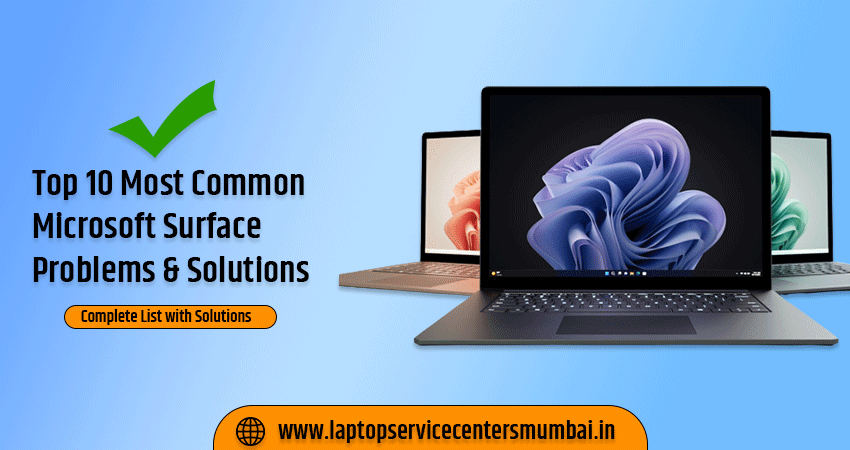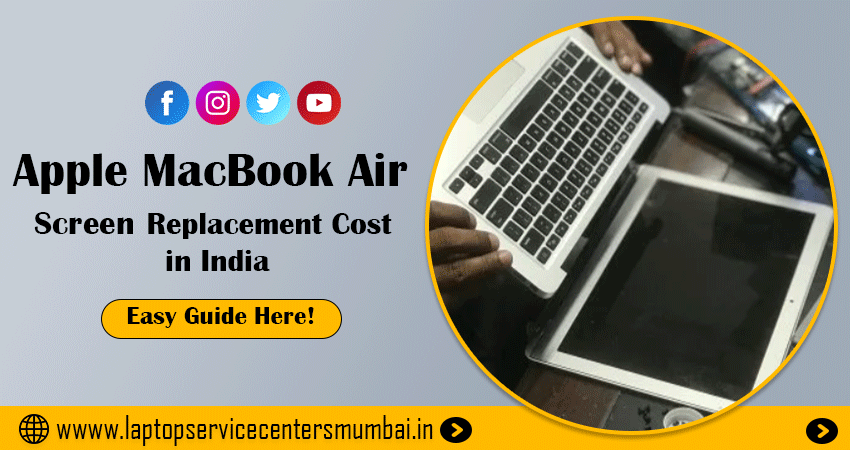Are you a proud owner of a Microsoft Surface device but find yourself running into common issues? Look no further! We’ve compiled the top 10 most common Microsoft Surface problems and their solutions to help you get the most out of your device. From battery life to screen glitches, we’ve covered you with easy-to-follow tips and tricks. Don’t let these pesky problems slow you down – read on for our expert advice!
Top 10 Most Common Microsoft Surface Problems & Solutions
If you’ve just purchased a Microsoft Surface or are thinking about doing so, you may wonder what some of the most common problems are and how to fix them. Here’s a list of the top Top 10 Most Common Microsoft Surface Problems & Solutions:
Problem 1: Battery Life
The average Microsoft Surface battery life is about 4-5 hours. However, some users have complained about only getting 2-3 hours of battery life after a full charge. If you are experiencing shorter than average battery life, there are a few things you can do to try and improve it:
1. Check for updates: Make sure you have all the latest updates installed for your Surface and any apps you have installed. Updates often include performance improvements and bug fixes that could help improve your Surface’s battery life.
2. Adjust your screen brightness: One of the biggest drains on battery power is having a bright screen. If you don’t need your screen to be super bright, try lowering the brightness to see if that helps improve your battery life.
3. Limit background activity: There are many things running in the background on your Surface even when you’re not using it. Some of these things can drain your battery even when not actively used. To help improve your Surface’s battery life, go into the Settings app and head to the Privacy section. From here, you can turn off background activity for an individual or all apps globally.
4. Use power saving mode: If none of the above tips is helping improve your Surface’s battery life, you can always try using power saving mode. This will disable some features and background activity on your Surface to help conserve power and improve battery life.
Problem 2: Wi-Fi Issues
If you’re having trouble connecting to Wi-Fi or staying connected, you can do a few things to try and fix the issue. First, ensure that the Wi-Fi connection you’re trying to connect to is working correctly. If not, try connecting to another Wi-Fi network or restarting your router. Sometimes all it takes is a quick restart to get things up and running again.
If you’re still having trouble, there are a few other things you can try:
- Make sure your Surface is within range of the Wi-Fi network. You will only be able to connect if you’re close enough.
- Check if there’s any interference that could be causing problems. Microwaves, cordless phones, and baby monitors can all interfere with Wi-Fi signals.
- Update your Surface’s firmware. You can do this by going to the Surface support site and downloading the latest updates for your device.
- Try changing the channel that your router is broadcasting on. This can sometimes help with connectivity issues.
- If all else fails, reset your Surface’s network settings back to their defaults. Go to Settings > Network & Internet > Reset > Reset Network Settings on your Surface.
Problem 3: Touchscreen Issues
Touchscreen issues are the most common problem with Microsoft Surface devices. A few things can cause touchscreen problems, but the most common is a loose connection between the digitizer and the motherboard. This can be caused by several things, including physical damage, water damage, or wear and tear.
If you’re having touchscreen issues, you should first check the connections between the digitizer and the motherboard. Ensure that they are secure and that no dirt or debris is blocking them. If everything looks good, try restarting your device. If that doesn’t work, you may need to replace your digitizer.
Problem 4: Keyboard Problems
One of the most common problems with the Microsoft Surface is keyboard problems. The Keyboard may stop working altogether, or specific keys may stop working. There are a few things you can try to fix the problem:
- Restart your Surface. This may seem like an obvious first step, but restarting can fix minor glitches with the Keyboard.
- Make sure the Keyboard is turned on. A physical switch on the side of the Microsoft Surface turns the Keyboard on and off. If it’s turned off, the Keyboard won’t work.
- Update your Surface firmware and drivers. Out-of-date firmware or drivers can cause problems, including with the Keyboard. You can update your Surface firmware and drivers by going to Settings > Update & Security > Windows Update and checking for updates.
- Try a different USB port if you’re using an external keyboard. Sometimes one of the USB ports on your Surface may be faulty and cause problems with keyboards (or other devices). Try connecting the Keyboard to a different port and see if that works better.
- If nothing else works, you may need to replace the Keyboard entirely. This is usually a last resort, but if nothing else is working, it may be necessary to get a new keyboard (either from Microsoft or from a third party).
Problem 5: Hardware Problems
If your Surface is experiencing hardware problems, there are a few things you can try to troubleshoot the issue. First, check to ensure that all of the connections are secure and that no debris or dirt is blocking any of the ports. Next, try resetting the Surface by holding the power button for 30 seconds. If the problem persists, you may need to replace the battery or other hardware components.
Problem 6: Software Problems
You’re not alone if you’re having trouble with your Microsoft Surface. Here are some of people’s most common problems with their Surface devices and how to fix them.
1. Slow performance
If your Surface is running slowly, you can try a few things to speed it up. First, make sure you only have a few apps open simultaneously. If you’re only using a few apps that are still running slowly, try restarting your Surface. If that doesn’t help, try resetting it to factory settings.
2. Touchscreen issues
If your touchscreen isn’t working correctly, ensure you have the latest updates for your Surface and try calibrating the screen. If that doesn’t work, you may need to replace the touchscreen.
3. Camera problems
If your camera isn’t working correctly, ensure the lens is clean, and nothing is blocking it. If that doesn’t help, try restarting your Surface. If the problem persists, you may need to replace the camera module.
4. Battery life issues
If your Surface’s battery isn’t lasting as long as it used to, there are a few things you can try to improve it. First, make sure you’re running only a few apps simultaneously and close any that you’re not using. Second, dim the screen brightness and disable any features that use a lot of battery power, such as
Problem 7: Display Issue
If you’re having trouble with your Surface display, you can try a few things to troubleshoot the issue. First, check to make sure that the display brightness is turned up all the way. If that doesn’t help, try plugging your Surface into an external display to see if the issue is with the Surface screen or the graphics processor.
If neither of those solutions solves the problem, it’s likely that you’re experiencing a hardware issue with your Surface display and will need to take it in for repair at Microsoft Surface Service Center.
Problem 8: Boot-Up Issues
Try a few things if you’re having trouble booting up your Surface. First, ensure your Surface is plugged in, and the power supply works. If it’s still not turning on, try holding down the power button for 30 seconds. If that doesn’t work, try resetting your Surface by holding down the volume-up and power buttons simultaneously for 15 seconds. If you need help with these solutions, you may need to contact Microsoft for support.
Problem 9: Overheating Problems
If your Surface is overheating, it could be because the fan isn’t working correctly. To fix this, try resetting the fan by following these steps:
- Press and hold the power button for 30 seconds.
- Press and release the volume-up button while still holding the power button.
- Press and release the volume-down button.
- Release the power button.
If this doesn’t work, you may need to replace the fan.
Problem 10: Windows Update Errors
If you see errors when you try to update your Windows 10 device, it might be due to a driver issue, a connection problem, or insufficient free space on your device.
To fix this problem, first, ensure that your device is connected to the Internet and that you have enough free space. Then, try running the Windows Update Troubleshooter tool. If that doesn’t help, try resetting the Windows Update service or restoring your device earlier.
For more detailed instructions, see Microsoft support article’s “Windows Update Troubleshooter” section on common Surface problems and solutions.
Read Also: How to Check Microsoft Surface Warranty
Conclusion
Microsoft Surface devices are great tools, but they can be tricky to use and maintain. Our top 10 list of the most common Microsoft Surface problems and their solutions have helped get your device back up and running again. If you still experience any issues with your Microsoft Surface device, don’t hesitate to contact a professional for help. Good luck!




